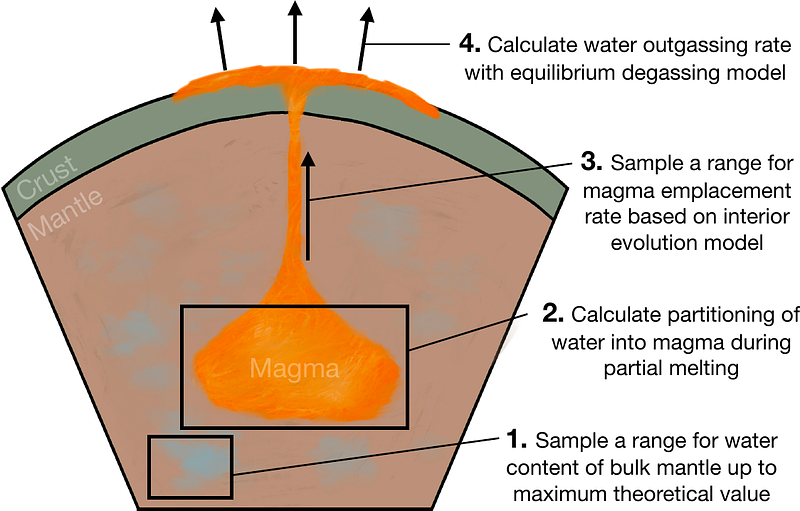Statistical geochemical constraints on present-day water outgassing as a source of secondary atmospheres on the TRAPPIST-1 exoplanets

Statistical geochemical constraints on present-day water outgassing as a source of secondary atmospheres on the TRAPPIST-1 exoplanets
Trent B. Thomas, Victoria S. Meadows, Joshua Krissansen-Totton, Megan T. Gialluca, Nicholas F. Wogan, David C. Catling
AbstractThe TRAPPIST-1 planetary system is observationally favorable for studying if planets orbiting M stars can retain atmospheres and host habitable conditions. Recent JWST secondary eclipse observations of TRAPPIST-1 c rule out a thick \ch{CO2} atmosphere but do not rule out atmospheric water vapor or its photochemical product, oxygen. Given the high expected escape rate, maintenance of atmospheric water vapor would require a present-day water source, such as volcanic outgassing. Here, we simulate water outgassing on the TRAPPIST-1 planets over a broad phase space based on solar system terrestrial bodies. We then apply two filters based on observation and geochemistry that narrow this phase space and constrain the plausible outgassing scenarios. For all seven TRAPPIST-1 planets, we find that the water outgassing rate is most likely $\sim$0.03x Earth's but has upper limits of $\sim$8x Earth's. The allowed range also implies low, Mars-like magma emplacement rates and relatively dry, Earth-like mantles, although mantle water mass fractions up to 1 wt\% are possible. We also present scenarios with magma emplacement rates similar to Mars, Earth, and Io, resulting in different preferred mantle water content and outgassing rates. We find that water outgassing rates are potentially high enough to balance water escape rates, providing a theoretical pathway for the TRAPPIST-1 planets to maintain surface water or water-vapor-containing atmospheres over long timescales. The bounds on outgassing rates and interior properties can be used in atmospheric chemistry and escape models to contextualize future observations of the TRAPPIST-1 planets, and may be applicable to other terrestrial exoplanets.